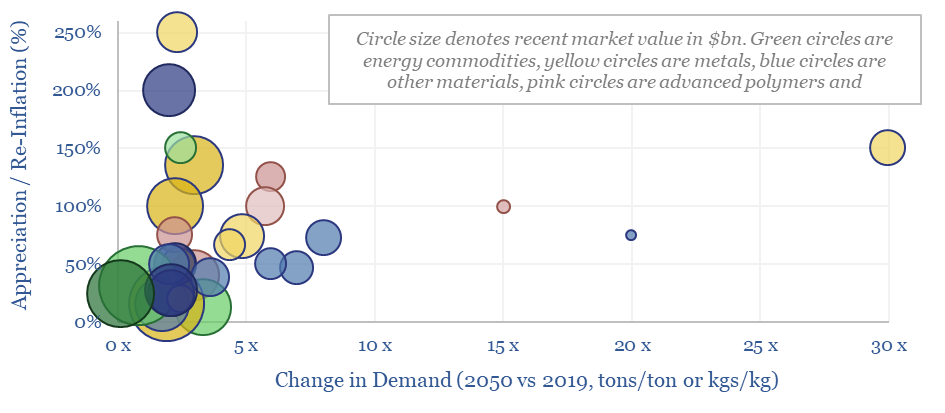Search results for: “ammonia”
-
US decarbonization: energy and CO2 emissions?
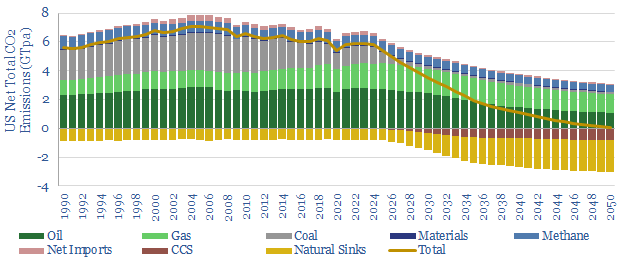
The US consumes 25,000 TWH of primary energy per year, which equates to 13,000 TWH of useful energy, and emits 6GTpa of CO2. This model captures our best estimates for what a pragmatic and economical decarbonization of the US will look like, reaching net zero in 2050, with forecasts for wind, solar, nuclear, hydro, oil,…
-
CO2 concentrations in industrial exhaust streams?
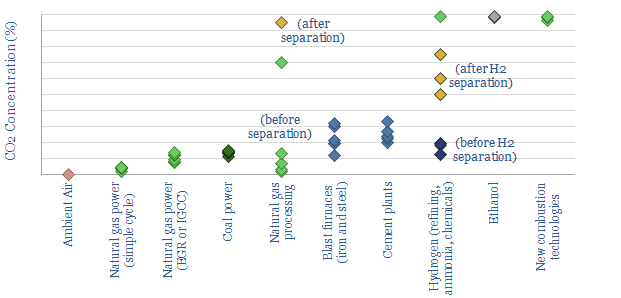
The aim of this data-file is to compile CO2 concentrations in industrial exhaust streams, as a molar percentage of flue gas. This matters for the costs of CO2 separation. Most promising CCS candidates are bio-ethanol plants, industrial hydrogen production and some gas processing, followed by cement and steel plants.
-
Methane reforming: costs of grey hydrogen, costs of blue hydrogen?
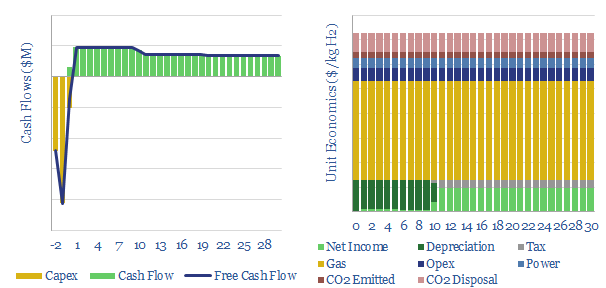
This data-file captures the economics of blue hydrogen production via reforming natural gas: either steam-methane reforming or auto-thermal reforming. Costs and operating parameters are compiled from technical papers. Blue hydrogen can be cost-competitive with CCS, while overall costs are most sensitive to gas prices.
-
Energy economics: an overview?
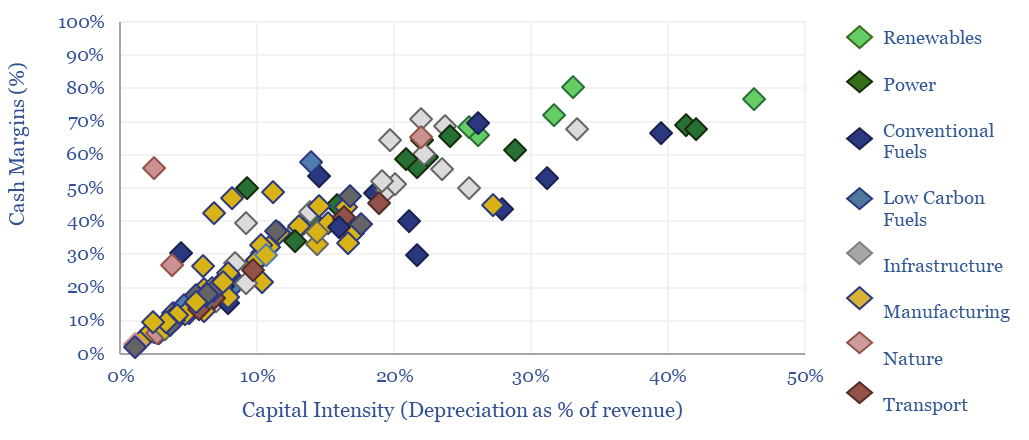
This data-file provides an overview of energy economics, across 175 different economic models constructed by Thunder Said Energy, in order to put numbers in context. This helps to compare marginal costs, capex costs, energy intensity, interest rate sensitivity, and other key parameters that matter in the energy transition.
-
US CO2 emissions by industrial facility size?
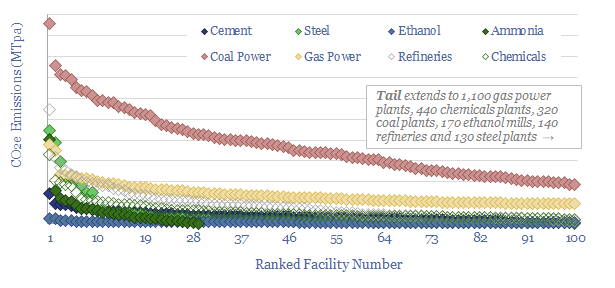
This data-file has aggregated CO2 emissions from 2,500 US industrial facilities. Many coal plants may be ‘too large’ for CCS. Most ethanol plants are ‘too small’. But 100 facilities in cement, steel and ammonia are ‘right sized’ and explain 2% of all US CO2 emissions.
-
Aker Carbon Capture: technology review?
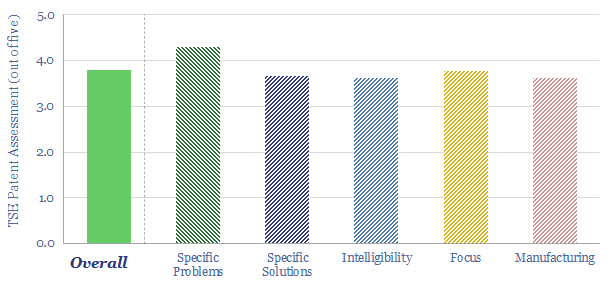
Aker Carbon Capture is a public company, listed in Norway, with c120 permanent employees. It has developed novel solvents for post-combustion carbon capture, modular CCS plants (JustCatch, at 40-100kTpa, and BigCatch at >400kTpa). The company aims to secure contracts for 10MTpa of CCS by 2025. This technology review looks for a moat in the patents.
-
Russia: a breakdown of export revenues?
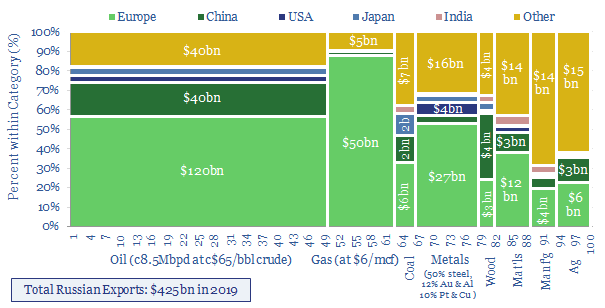
Russia’s total total exports ran at $425bn in 2019, comprising $225bn of oil, $55bn of gas, $50bn of metals, $20bn of coal, $30bn basic materials and $25bn of ag products. 55% of the total goes to Europe. This data-file gives a breakdown for 100 products across 200 countries, to allow for stress-testing.
-
Urea production: the economics
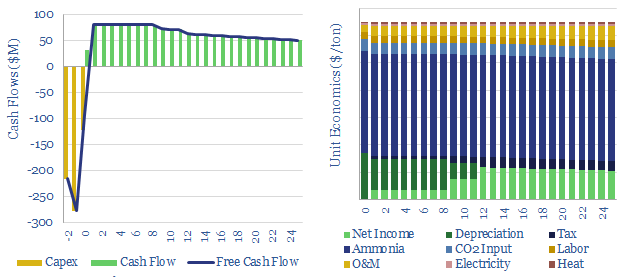
This data-file captures the economics of producing urea, an important fertilizer and intermediate material. We estimate a marginal cost of $325/ton, based on $2/mcf-e energy inputs. CO2 intensity is 1.5 tons/ton. But costs will increase well above $800/ton during times of energy shortages.
-
Hydrogen: what GWP and climate impacts?
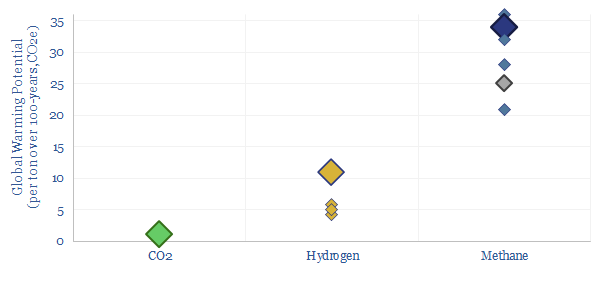
Hydrogen is an indirect GWP, as it breaks down in the atmosphere over 1-2 years, increasing the lifespan of other GHGs, such as methane. So what is hydrogen GWP versus methane? 1 ton of atmospheric H2 most likely causes 11x more warming than 1 ton of CO2 (the number for methane is 34x). Eight conclusions…
Content by Category
- Batteries (87)
- Biofuels (42)
- Carbon Intensity (49)
- CCS (63)
- CO2 Removals (9)
- Coal (38)
- Company Diligence (92)
- Data Models (822)
- Decarbonization (159)
- Demand (110)
- Digital (58)
- Downstream (44)
- Economic Model (200)
- Energy Efficiency (75)
- Hydrogen (63)
- Industry Data (275)
- LNG (48)
- Materials (81)
- Metals (74)
- Midstream (43)
- Natural Gas (146)
- Nature (76)
- Nuclear (23)
- Oil (162)
- Patents (38)
- Plastics (44)
- Power Grids (124)
- Renewables (149)
- Screen (112)
- Semiconductors (30)
- Shale (51)
- Solar (67)
- Supply-Demand (45)
- Vehicles (90)
- Wind (43)
- Written Research (347)
